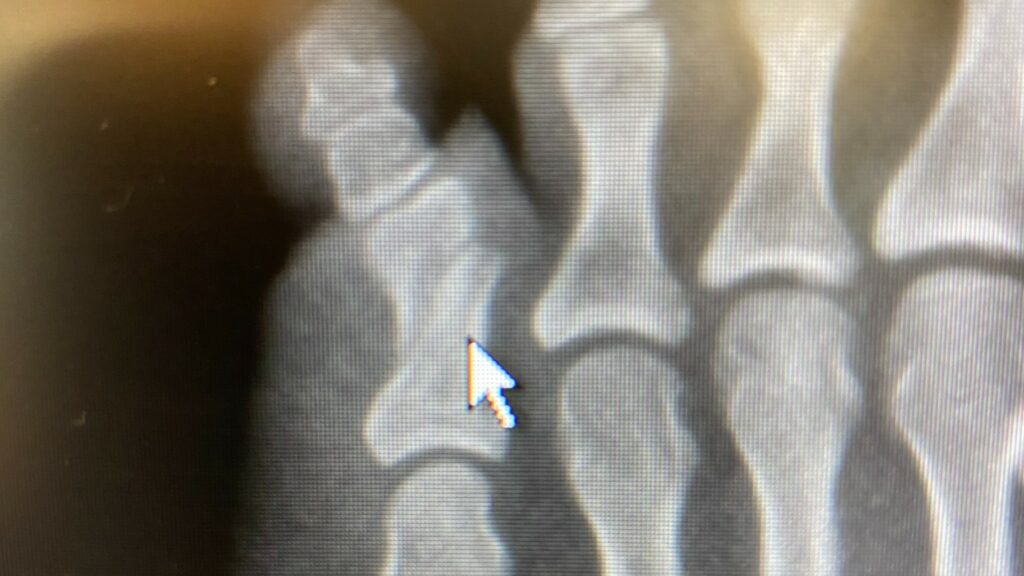Everyone’s done this at least once in their life. You get up out of bed in the wee hours of the early morning, trying to get ready for the day, and in your dazed and confused stupor, your pinky toe collides with that dresser that always seems to jut out just a little too far.
You feel a sudden sharp pain and now you’re fully awake. Your toe continues to hurt throughout the day even though you attempted to “walk it off” at which point you ask yourself, “is it broken?”
It would surprise most people to know it doesn’t take a lot of force to fracture your toe. A simple innocent stub incident like the one mentioned can lead to a toe fracture which needs to be treated and examined immediately.
About Toe Fractures
There are a few things to know about fractures in general:
- A non-displaced fracture, as bad as it is, is not as bad as a displaced fracture. As the name suggests, a non-displaced fracture is one in which there is a broken bone, but alignment and position of the fragment are largely intact, what’s known as “anatomic position”.
- A displaced fracture, however, is one where the bone fragment has changed position and is not aligned properly. Though all fractures are a concern and medical treatment should be sought right away, a displaced fracture needs to be examined and treated immediately to minimize complications.
Depending on where the fracture is located, duration since injury, level of swelling, discoloration of the toe, as well as the position and degree of the displacement of the fragment, complications such as neurovascular compromise, skin necrosis, or in some severe cases, traumatic loss of digit can occur.
Don’t let that be you! Another complication to consider is “did the fracture break through the skin?” This is a fairly rare occurrence, however, when it happens, it is an emergency and should be treated right away.
When there’s a fracture but the skin looks intact, it is known as a closed fracture, whereas one that breaks through the skin and now has a wound is known as an open fracture. As expected, a fracture in the presence of an open wound is a serious problem. This means bacteria can enter the wound and cause an infection in the bone.
What to do for a broken toe
- First things first, avoid walking or putting unnecessary pressure on the injured toe. This could not only increase pain and swelling, but can potentially move the fragment and cause it to displace.
- Apply some ice or an ice pack on the affected toe for 15-20 minutes every couple of hours.
- Elevate your foot on some pillows, above the level of your heart if possible, to reduce swelling.
- Apply a buddy splint using a compression strap such as Coban in order to stabilize the digit, reduce swelling through compression, and avoid further displacement.
Important! Despite what any social media post or YouTube video might suggest, never attempt to reduce the fracture or “move the toe back” on your own. Without proper medical training, any mishandling of the traumatized digit can lead to other complications, not to mention it’ll hurt worse.

Upon having a podiatrist examine your toe through clinical examination and necessary x-rays, it can be determined how “bad” the fracture is and if treatment will go the conservative vs surgical route. Most of the time, a toe fracture is handled conservatively, with a subsequent closed reduction of the fracture if necessary.
Keeping the digit stabilized with a buddy splint and having the patient ambulate in a surgical shoe is the recommended course of treatment. In severe cases where the fragment might cause long-term complications if left untreated or if the fracture involves other neighboring bones, the fracture is reduced surgically and can be fixated with surgical hardware as needed.
If you’ve injured a toe, allow one of the Advanced Foot Care specialists at any of our Long Island offices to determine if it’s broken. An accurate diagnosis can make all the difference in your path to recovery.





